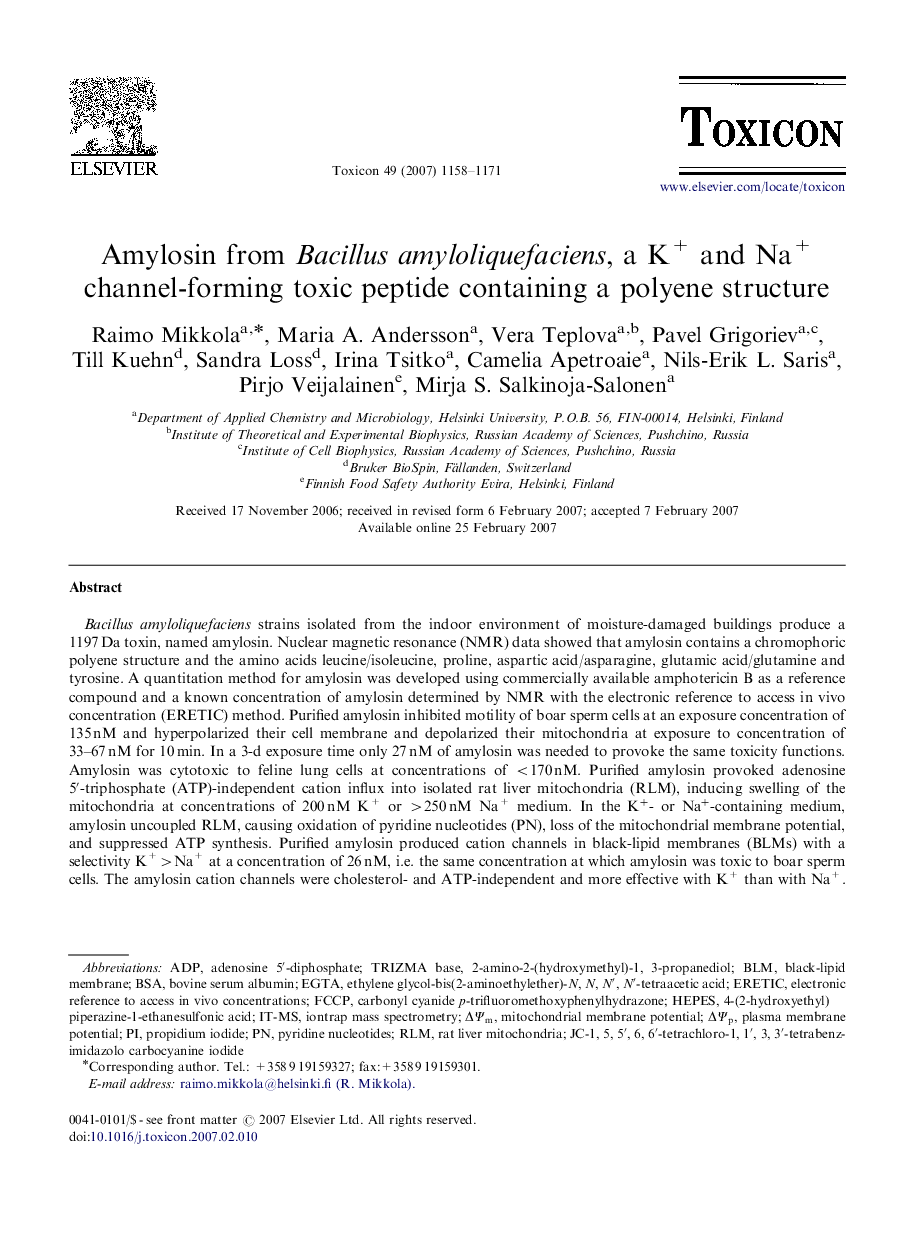| کد مقاله | کد نشریه | سال انتشار | مقاله انگلیسی | نسخه تمام متن |
|---|---|---|---|---|
| 2066055 | 1076961 | 2007 | 14 صفحه PDF | دانلود رایگان |

Bacillus amyloliquefaciens strains isolated from the indoor environment of moisture-damaged buildings produce a 1197 Da toxin, named amylosin. Nuclear magnetic resonance (NMR) data showed that amylosin contains a chromophoric polyene structure and the amino acids leucine/isoleucine, proline, aspartic acid/asparagine, glutamic acid/glutamine and tyrosine. A quantitation method for amylosin was developed using commercially available amphotericin B as a reference compound and a known concentration of amylosin determined by NMR with the electronic reference to access in vivo concentration (ERETIC) method. Purified amylosin inhibited motility of boar sperm cells at an exposure concentration of 135 nM and hyperpolarized their cell membrane and depolarized their mitochondria at exposure to concentration of 33–67 nM for 10 min. In a 3-d exposure time only 27 nM of amylosin was needed to provoke the same toxicity functions. Amylosin was cytotoxic to feline lung cells at concentrations of <170nM. Purified amylosin provoked adenosine 5′-triphosphate (ATP)-independent cation influx into isolated rat liver mitochondria (RLM), inducing swelling of the mitochondria at concentrations of 200 nM K+ or >250 nM Na+ medium. In the K+K+- or Na+Na+-containing medium, amylosin uncoupled RLM, causing oxidation of pyridine nucleotides (PN), loss of the mitochondrial membrane potential, and suppressed ATP synthesis. Purified amylosin produced cation channels in black-lipid membranes (BLMs) with a selectivity K+>Na+ at a concentration of 26 nM, i.e. the same concentration at which amylosin was toxic to boar sperm cells. The amylosin cation channels were cholesterol- and ATP-independent and more effective with K+ than with Na+. We propose that the toxicity of amylosin may be due its ionophoric properties, representing the first K+/Na+ channel-forming substance reported from B. amyloliquefaciens.
Journal: Toxicon - Volume 49, Issue 8, 15 June 2007, Pages 1158–1171